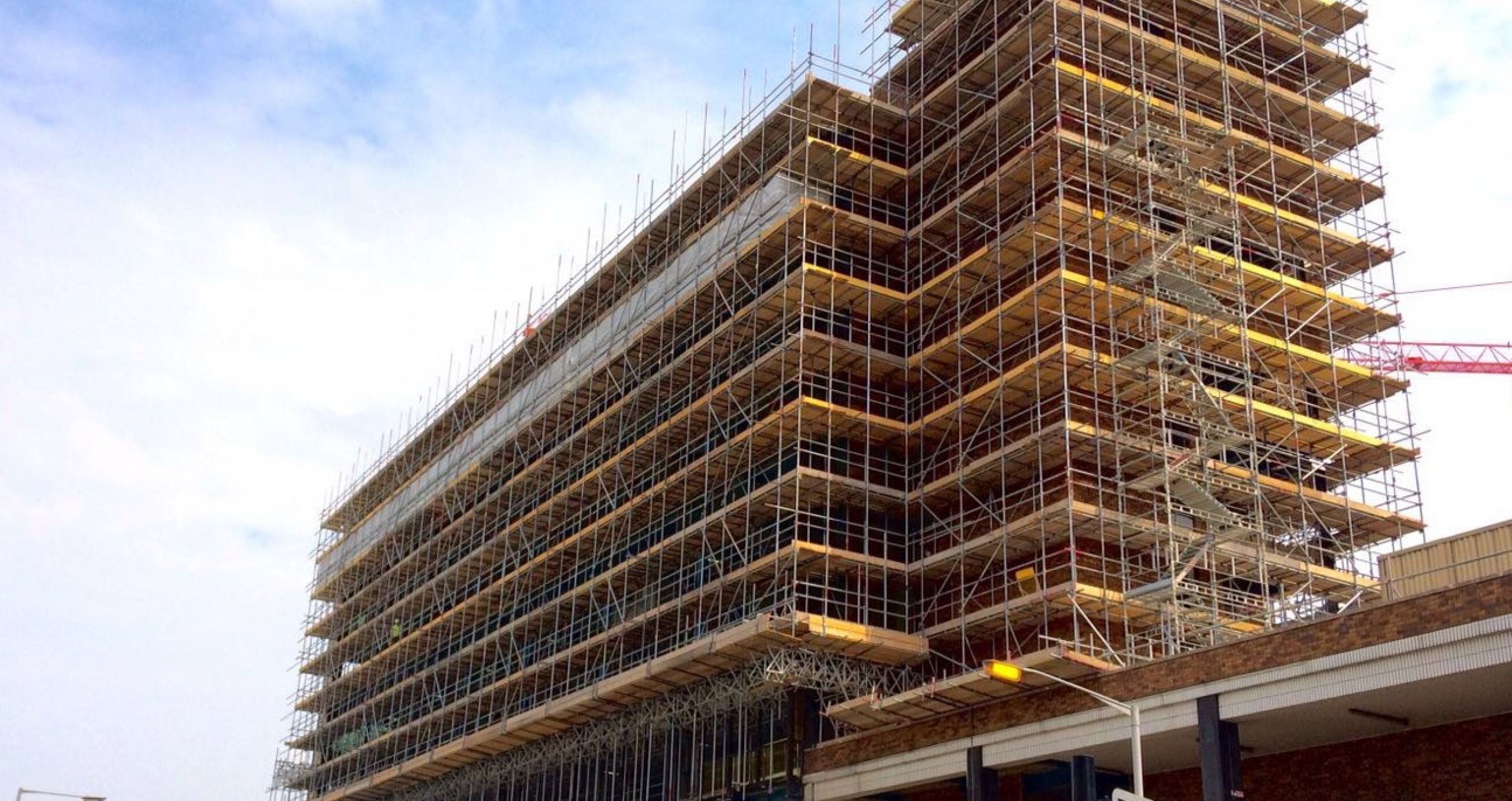14 Oct 2019
Driving the evolution of scaffolding
Frustratingly, scaffolding is often the first thing a construction project requires, and the last thing that is thought of. Largely, scaffolding contractors are instructed before the scaffolding design is even considered, let alone planned or signed off, which inevitably means that the design of scaffolding and associated temporary works is rushed, inefficient and doesn’t consider the wider project. Contract scaffolding is an example of this with an average contract growth of between 75-80% between order and final account. Temporary works design, and specifically scaffolding design, often comprises of a misaligned integration of multiple aspects of temporary works, designed with little consideration for the permanent works or surrounding interfaces.
Dedicated to driving the evolution of scaffolding, 48.3 have worked, and continue to work, tirelessly with principle contractors and tier 1/2 sub-contractors to reconstruct this habitual attitude towards temporary works design and construction, in order to improve safety, efficiency, and ultimately, profit. This means removing scaffolding design from the scaffolding contractor’s scope of works, and instructing scaffolders based on the requirements of the fully-encompassing temporary works design.
This approach has already been hugely successful with 48.3 clients. “Their [48.3] proposal for the North-South elevation to support the hoarding and gangway for the stone mason has helped to improve safety and productivity,” says Laurence Baptiste, Construction Director at Blue Sky Building (during construction of the luxury Radisson Blu hotel in Leicester Square). With regards to prioritising scaffolding design before instructing scaffolding contractors, Laurence comments that this “allowed us to develop a clear scope of works to suit the contract and it meant that when we went to tender, the contractors were tendering on a level playing field.”
What is scaffolding design?
Scaffolding design is an imperative part of any temporary works construction project. Earlier this year, BS 5975 significantly updated its Section Two on the procedural control of all temporary works and how all involved parties should operate their procedures. This means much more process control over scaffolding (and other temporary works) design, with making it a primary action before scaffolder instruction a wise and critical move.
Karl Jones, Client Development Director, Amicus Insurance Solutions, writes: “Even if you use an external designer, they will be downstream of your contractual arrangement with the main contractor or employer, so you will get dragged into any legal action initially. This means you should check scaffold designs yourselves, if anything’s missing (or included) that wasn’t originally specified, then question why it’s been done.”
Traditionally, by including design into the scaffolding contractor’s package, the scaffolding design will reflect largely only the scaffolder’s scope of works. There will be little consideration for any other temporary (or permanent) works, meaning that multiple, additional interfaces will need to be integrated, managed and coordinated by the Temporary Works Coordinator (TWC). Our competitors are clear on their position on this, as Chris Harrison (Apex Scaffold Design) comments in Access Point Magazine: “We make it quite clear on our designs that it is the responsibility of the principal contractor to ensure the ground and/or structure will safely support the loads applied from the scaffold.” However, multiple issues can, and often do, arise from this approach, with huge time, cost and resource consumption being just a few. This is where 48.3 are different, because we believe that we should ensure the load capabilities of surrounding interfaces.
Designing scaffolding at the start of a construction project not only provides a wider visibility on the project (primarily it’s length and cost), but also provides a deeper understanding of exactly what is required, with potential amendments and improvements to other temporary and permanent works coming into scope (which can be a huge benefit to multi million-pound construction projects).
Why are 48.3 different?
Starting with an introduction of commercial and management services, and now providing a full-circle design service, 48.3, a Richter Associates company, is a true driving force towards the future of scaffolding, design and temporary works. The combination of scaffolding and access design expertise from 48.3 and Richter’s civil, structural and geotechnical know-how means that there is now a provider of fully-integrated design services to the industry. The benefits that this brings to principal contractors and scaffolding contractors are extensive.
This unique service offering means that all requirements from the start to the finish of a construction project are considered at the very beginning, undoubtedly creating a much more cost and time effective solution. There are no “design by others” or “design by principal contractor” notes on the drawing, and no miscommunication between interfaces. There’s less risk, no last-minute changes and no unnecessary (cost-heavy) redesigns or reworks.
Proven as successful in many projects to date, a fully-integrated design approach to temporary and permanent works is effectively reverse-engineering. It’s seeing the desired finished product and looking at how that construction process can be more efficient. It’s amalgamating what’s needed now, what might be needed and what will be needed in the design, from start to finish. It’s the next step in the evolution of scaffolding.
If you are a principle contractor looking to minimise cost, risk or delays in your construction project, or a scaffolding contractor looking to optimise your design solution, get in touch with the team here at 48.3 to discuss how we can help you.
